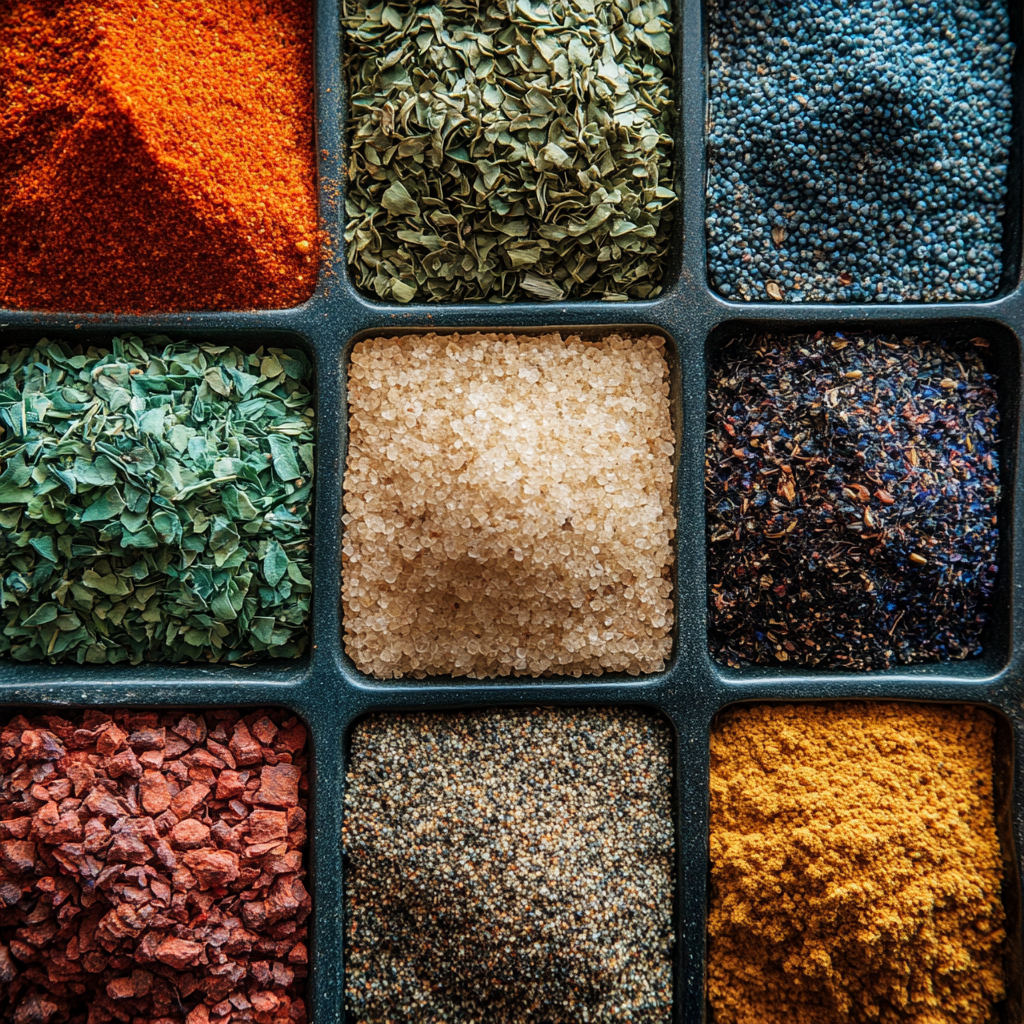Guide to Traditional Seasonings Used in American Cuisine
In the United States, 75% of home cooks consider American spices essential to their kitchen. They typically keep over 20 different cooking spices on hand, highlighting the importance of a well-stocked spice pantry for creating flavorful dishes. American cuisine thrives on the use of spices and seasonings, which add depth and complexity to meals. From everyday staples like black pepper to unique options like cayenne pepper, the variety is vast. Having the right spices is crucial for crafting dishes that evoke a sense of home.
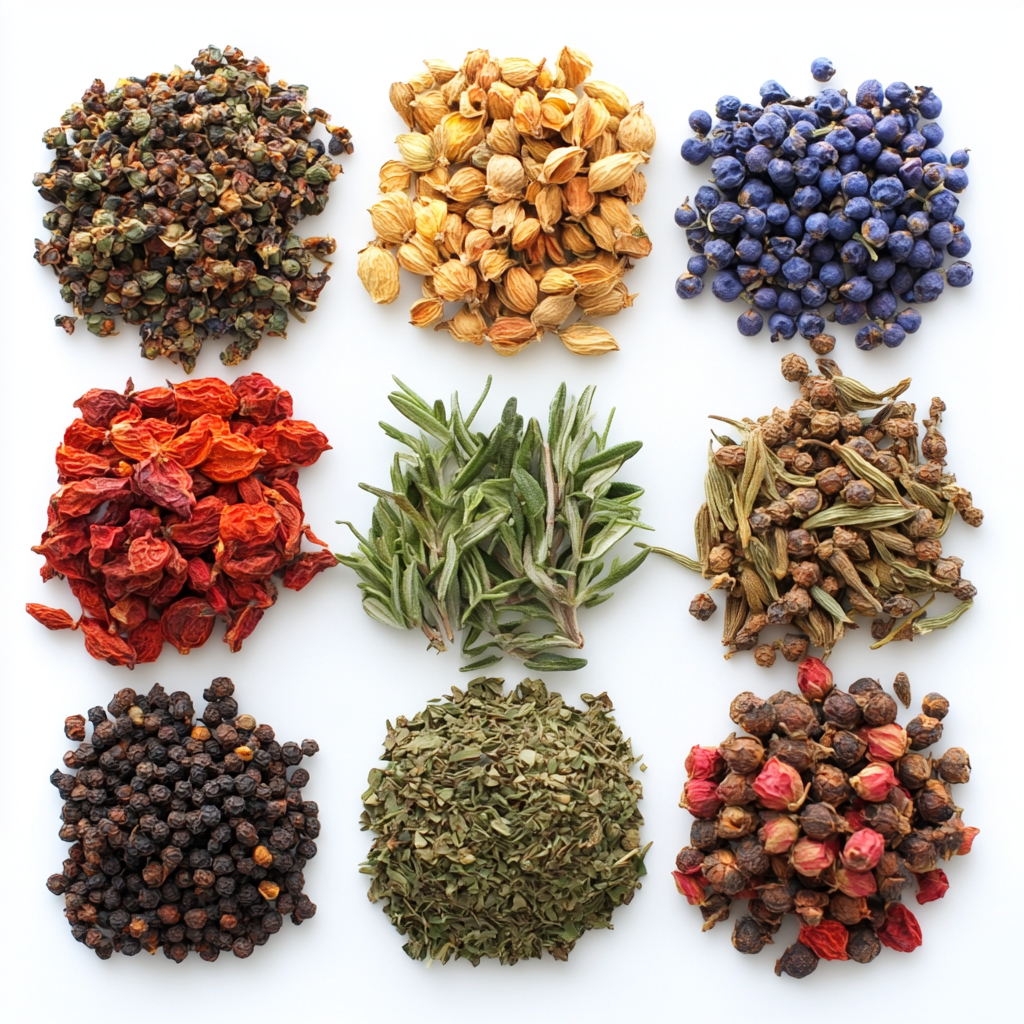
With so many options, choosing the right spices can be overwhelming. That’s why we’ve created this guide to the must-have spices for any American kitchen. Whether you’re an experienced cook or just starting out, this Guide to Traditional Seasonings Used in American Cuisine will help you elevate your cooking with the best American spices.
Key Takeaways
- 75% of American home cooks consider American spices a crucial part of their kitchen essentials.
- A well-stocked spice pantry is key to creating a wide variety of flavorful dishes.
- Classic American seasonings add depth and complexity to meals.
- Essential spices like black pepper, garlic powder, and paprika are staples in American kitchens.
- Understanding regional spice traditions and modern trends can enhance your cooking.
The Foundation of American Flavors
American cuisine is a melting pot of flavors, shaped by historical influences and regional diversity. From the early settlers to the contributions of various cultures, the evolution of American spices has created a rich culinary tapestry.

Regional Flavor Profiles
Each region in the U.S. has its own unique spice preferences:
- Southern States: Known for bold, spicy flavors with spices like cayenne pepper and paprika.
- Northeastern States: Focus on fresh herbs like thyme and rosemary, often paired with garlic and onion powder.
- Southwestern States: Feature bold, smoky flavors with chili powder, cumin, and coriander.
By exploring these regional profiles, you can create authentic American dishes that celebrate the country’s culinary heritage.
Must-Have Basic Spices for Every American Kitchen
Every American kitchen should have a foundation of essential spices. These include:
- Salt and Black Pepper: The backbone of seasoning.
- Garlic Powder and Onion Powder: Adds depth to savory dishes.
- Paprika: Provides a smoky or sweet flavor, depending on the variety.
These spices are versatile and can be used in everything from soups to grilled meats.
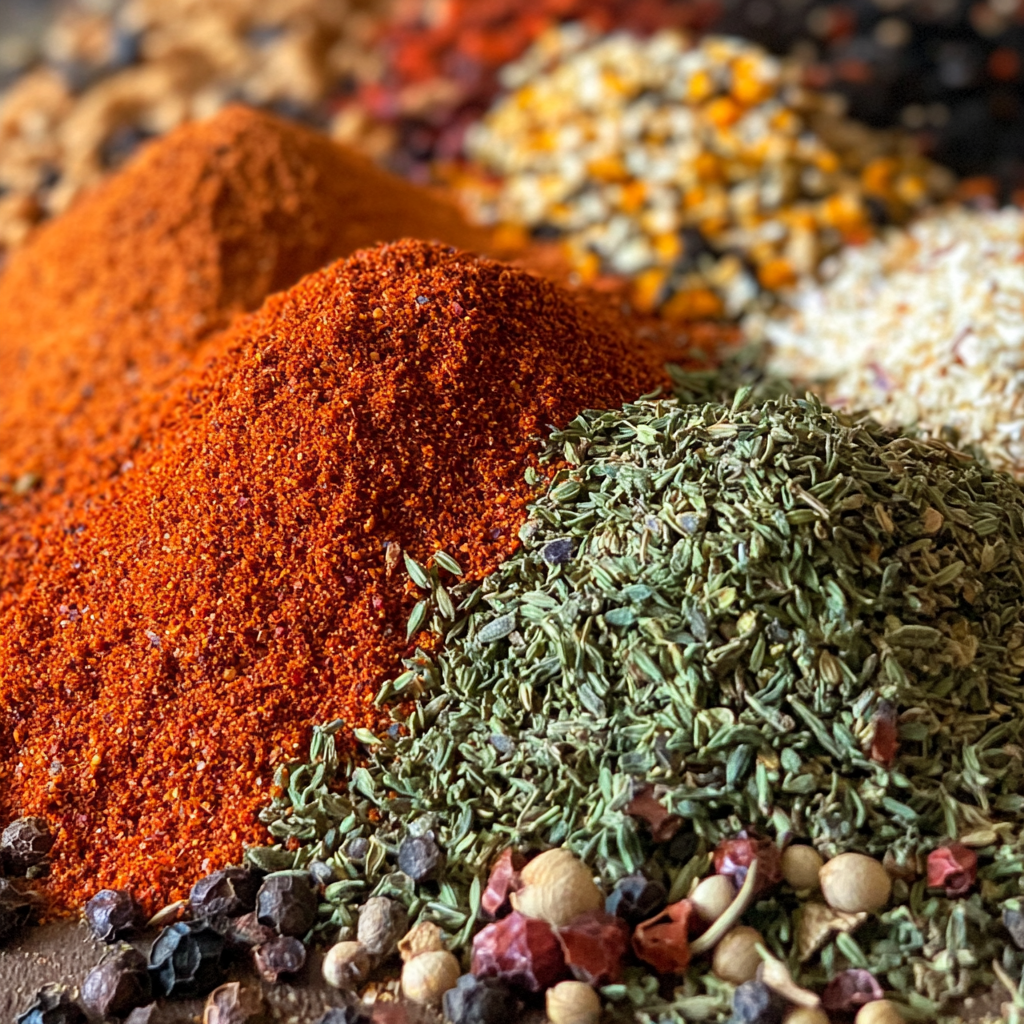
Pepper Varieties in American Cooking
Pepper is a cornerstone of American cooking. Common varieties include:
- Black Pepper: A universal seasoning.
- White Pepper: Ideal for light-colored dishes.
- Cayenne Pepper: Adds heat to spicy recipes.
Experimenting with different pepper varieties can elevate your dishes.
Essential Herb Blends for American Recipes
Herb blends like Italian seasoning, herbs de Provence, and poultry seasoning are staples in American kitchens. These blends combine herbs like thyme, rosemary, and oregano to add complexity to dishes.
Traditional Seasonings in American Cuisine
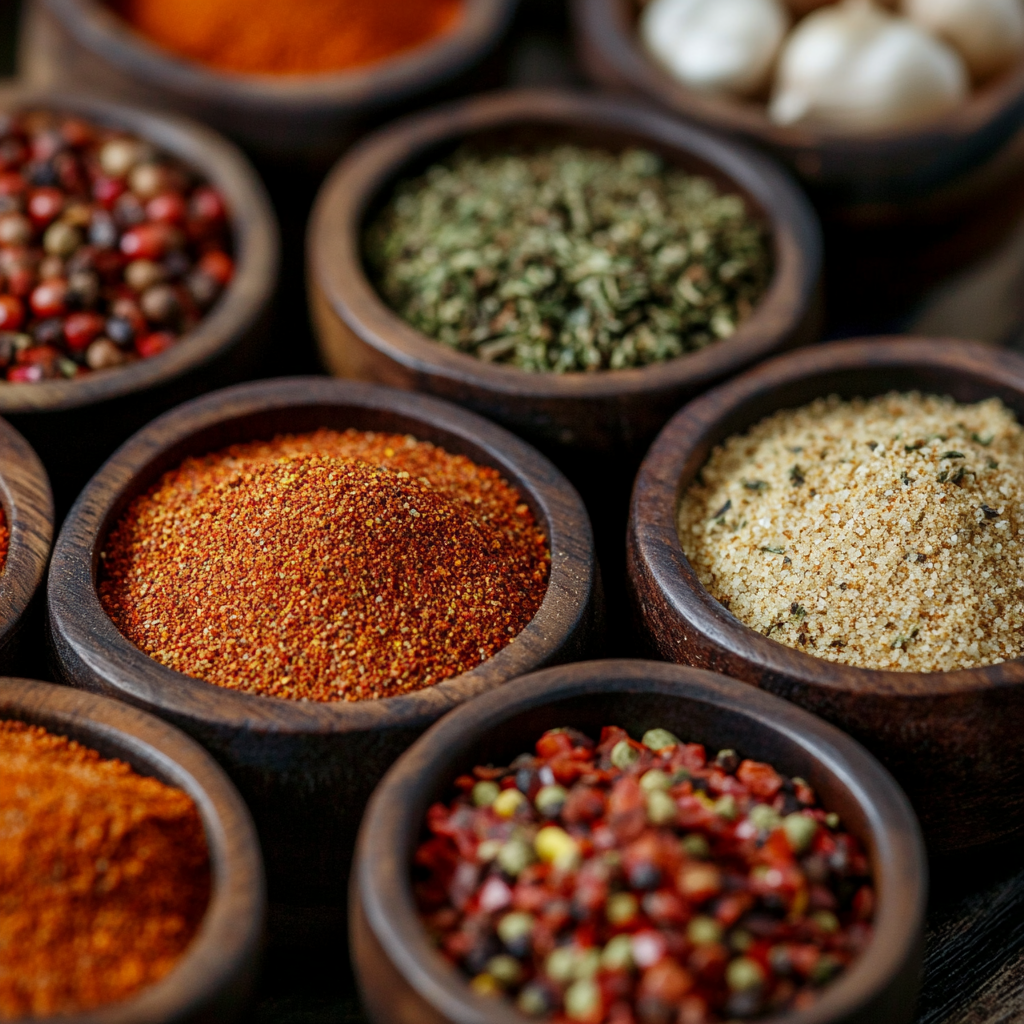
Traditional seasonings are the heart of American cooking. Popular blends include:
- BBQ Spice Blends: A mix of chili powder, cumin, and brown sugar.
- Poultry Seasonings: Sage, thyme, and black pepper for roasted chicken.
- Meat Rubs: Paprika, coriander, and cayenne for grilling.
These seasonings are essential for creating authentic American flavors.
Baking Spices in American Desserts
Baking spices like cinnamon, nutmeg, and ginger are key to American desserts. They add warmth and depth to classics like apple pie, pumpkin pie, and gingerbread cookies.
Regional American Spice Traditions
Each region has its own spice traditions:
- Southern Spices: Warm spices like cinnamon and nutmeg.
- Northeastern Flavors: Herbs like thyme and rosemary.
- Southwestern Heat: Bold spices like chili powder and cumin.
Understanding these traditions helps you create regionally inspired dishes.
Storing and Maintaining Your Spice Collection
To keep your spices fresh:

- Store them in airtight containers in a cool, dark place.
- Check expiration dates regularly.
- Organize your spices for easy access.
Proper storage ensures your spices retain their flavor and potency.
Modern American Spice Trends
Modern trends include incorporating global spices like Korean chili flakes and Middle Eastern sumac. These spices add unique flavors to traditional American dishes.
Specialty Spices for American Fusion Cooking
Fusion cooking blends American spices with global flavors. Examples include:
- Garam Masala: Adds warmth to soups and stews.
- Furikake: A Japanese seasoning for savory dishes.
These spices open up new culinary possibilities.
Seasonal Spice Usage in American Cooking
Spices change with the seasons:

- Winter: Cinnamon, nutmeg, and cloves for cozy dishes.
- Spring: Fresh herbs like basil and mint.
- Summer: Bold spices like paprika and cayenne for grilling.
- Fall: Warm spices like allspice and ginger.
Using seasonal spices enhances the flavors of your dishes.
Building Your American Spice Pantry
Start with the basics:
- Essential Starter Kit: Salt, pepper, garlic powder, onion powder, and paprika.
- Budget-Friendly Options: Buy in bulk or shop at local markets.
- Premium Spices: Invest in high-quality spices for superior flavor.
A well-stocked pantry is the foundation of great cooking.
Health Benefits of Common American Spices
Many spices offer health benefits:
- Turmeric: Anti-inflammatory properties.
- Ginger: Aids digestion and reduces nausea.
- Cumin: Rich in antioxidants.
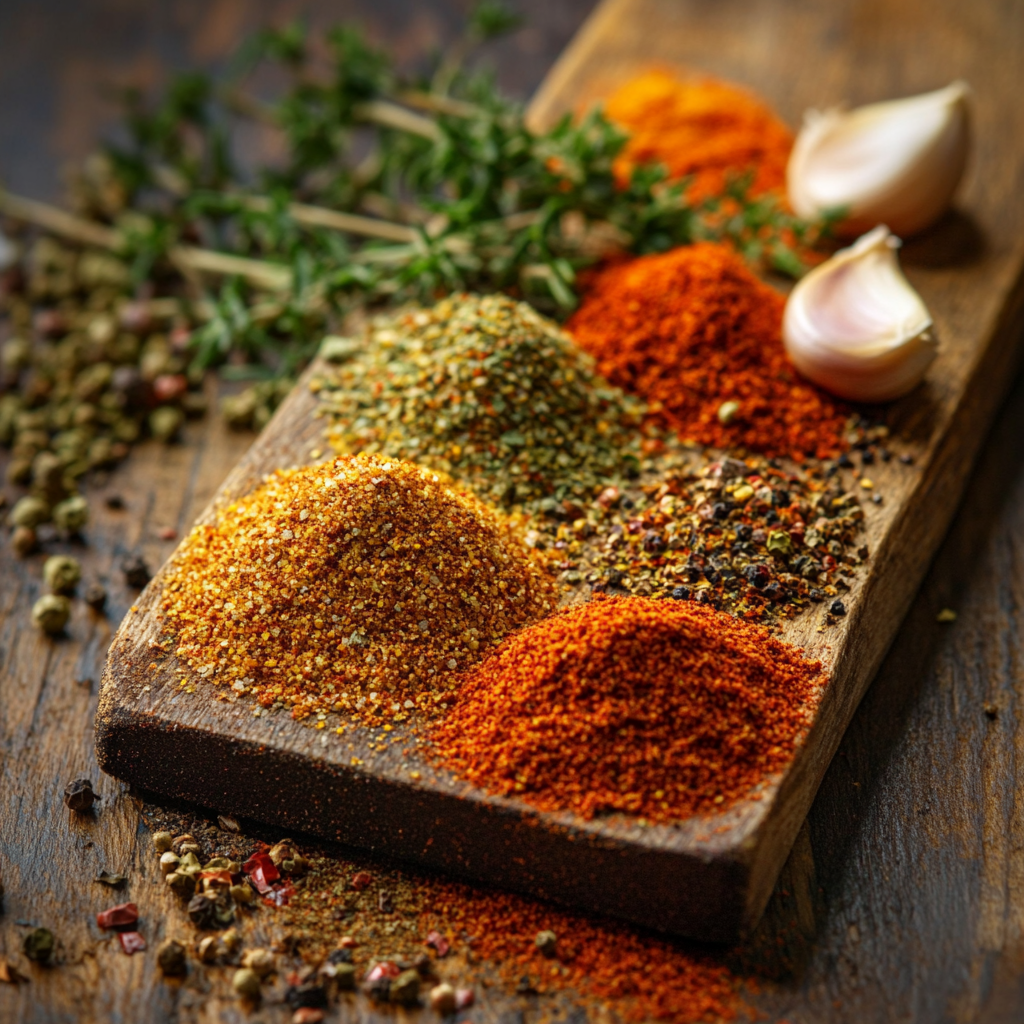
Incorporating these spices into your diet can boost your overall health.
Conclusion: Mastering the Art of American Seasoning
Mastering American seasoning is a journey of discovery. By building a well-stocked pantry and experimenting with regional and global spices, you can create dishes that are both flavorful and memorable. Embrace the diversity of American spices and let your creativity shine in the kitchen.
FAQ
What are the most essential spices for an American kitchen?
Essential spices include salt, black pepper, garlic powder, onion powder, and paprika.
How can I use pepper in American cooking?
Use black pepper for general seasoning, white pepper for light dishes, and cayenne pepper for heat.
What are some popular herb blends used in American recipes?
Italian seasoning, herbs de Provence, and poultry seasoning are popular choices.
How can I properly store and maintain my spice collection?
Store spices in airtight containers in a cool, dark place and check their shelf life regularly.
What are some modern American spice trends?
Trends include using global spices like Korean chili flakes and Middle Eastern sumac.
How can I build a well-stocked American spice pantry?
Start with essential spices and gradually add specialty and global spices.
What are the health benefits of common American spices?
Spices like turmeric, ginger, and cumin offer anti-inflammatory and antioxidant benefits
.Outbound Links
Learn about the health benefits of spices at Healthline.
Simply USA Recipes for more inspiration on American cooking.
Explore regional spice blends at The Spice House.

